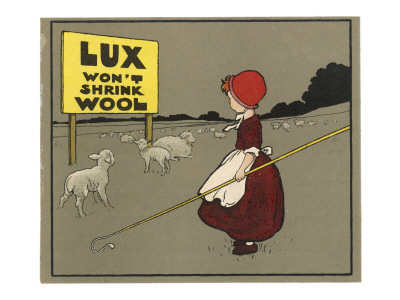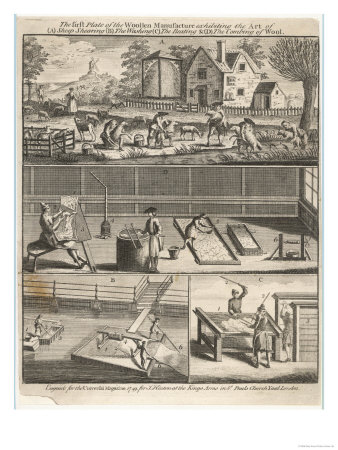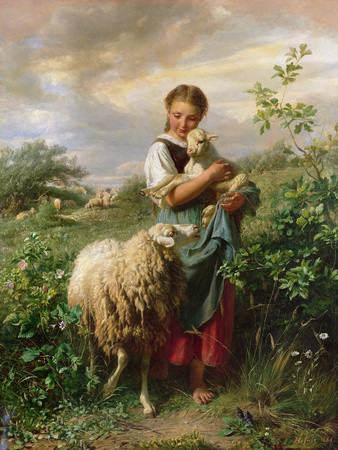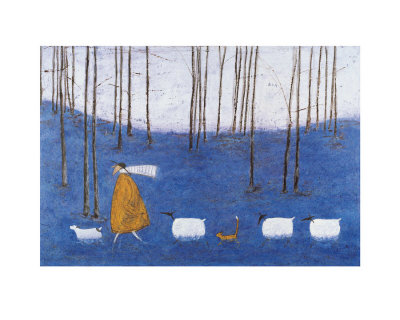Washing the fleece requires buckets of hot water. The water should be about 120 degrees but the quick way to judge is if it is too hot to put your hands in it without gloves, it’s hot enough. You don’t want it much over 120 as the wool will start to cook.
I have heard of several opinions on soap, but one mill owner told me to use the cheapest of laundry detergent and about 3 times the amount called for. This is mixed in one bucket and the wool gently pressed into the water. Then it’s allowed to soak for no more than 20 minutes. Agitating the fleece in hot water will cause it to felt, so handled gently and wear gloves. When you remove the fleece, squeeze it gently and place it in the next bucket or sink.
If the fleece is dirty, you can wash it two or even three times. Always try to match the temperature of the water so that the fleece doesn’t become felted. When you’re ready to rinse, just use clear hot water and soak again. Repeat until the water runs clear. You can spin the fleece in a laundry bag, spin in a washing machine (Don’t let it agitate) or roll in a towel and squeeze to remove excess water. Spread on something like a screen to let it dry.




















 How I Found My Free Family History Programon 09/05/2013
How I Found My Free Family History Programon 09/05/2013
 Finding a Graveon 09/01/2013
Finding a Graveon 09/01/2013
 Do Border Collies Make Good Pets?on 08/11/2013
Do Border Collies Make Good Pets?on 08/11/2013
 Hubert Patey - an Indentured Servanton 08/02/2013
Hubert Patey - an Indentured Servanton 08/02/2013



Questions, or things I forgot..
Ha ha.....:-))
Ah. Yes, I'm saying Duh, to myself! :)
Because they are greedy beasts and try to get there first.
I agree with 2uesday, the colours of the wool are beautiful. But can I ask Lana (this will probably prove to be a really stupid question on my part) but why do sheep like to have the hay on their backs?
Why thank you.
Yeah, not so much in Texas. I'll have to get back to rug making...
There are quite a few wool arts farms around these parts of New Hampshire and it was all new to me. I think it's wonderful that people put all the work into it and make such unique and lovely products and yarn for us to enjoy.
I'd thought about milking sheep. I had one that would have tolerated it. But I never really did. I had the sheep for training my Border collies and It was easier to have goats and keep them separate.
We raised sheep years ago when our kids were little. We had about 70. My husband did the shearing himself. We also milked them. Have you tried that? Sheep's milk is so rich and creamy -- makes great cheese.
I love going the the process myself. It may not be the most practical way to do it, but I love each step.